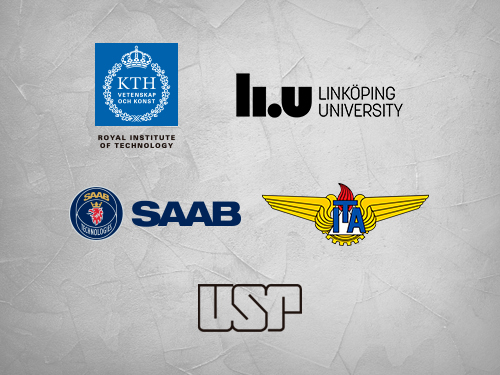Long-term and sustainable projects tend to have one characteristic in common: they arise from a solid base and only begin expanding when there is certainty as to the paths to be followed.

Long-term and sustainable projects tend to have one characteristic in common: they arise from a solid base and only begin expanding when there is certainty as to the paths to be followed. That was how the PreLafloDeS pre-project culminated in LaFloDeS. The pre-study was part of the NFFP6, as the National Aeronautical Engineering Research Program, managed by the Swedish innovation agency, VINNOVA. The main focus was deepening the knowledge of the use of active flow control to improve quality laminar flow in wings.
The projects were carried out in collaboration between Brazil and Sweden. On the Swedish side, there were KTH (Royal Institute of Technology), Linköping University (LiU) and the company Saab. Participants in Brazil were the University of São Paulo (USP), the Institute of Aeronautical Technology (ITA), and CISB, which acted as a facilitator and unifier of the entire process.
About the Project
PreLafloDeS was a low TRL (Technology Readiness Level) project, which means that it was created to previously measure the level of adequacy of the technology that would be developed next. Professor Ardeshir Hanifi, of KTH, highlights that this stage of the project, in addition to establishing technical parameters, was very important to understand the process of creating and executing collaborative projects between Brazil and Sweden, simplifying future proposals of the same kind.
“At the end of the PreLaFloDeS, we had achieved all of our goals and a document was signed between all parties. We identified the problems that were of common interest between Industry and the Academy, creating a research plan that included theoretical questions, mathematical simulations and experimental work,” explains Professor Hanifi.
With the first stage completed in a project that was carried out between 2016 and 2018, it was possible to start LaFloDeS. This new phase aims to investigate issues related to the design and manufacture of wings and other relevant components with low aerodynamic resistance for aircrafts. Professor Hanifi details: “Within this project, we researched how the quality of surfaces affects the wings. It is important that we have accurate estimates, especially of the transitions between a laminar or turbulent flow.”
LaFloDeS has been underway since November 2019, and has already shown positive initial results for everyone involved. This collaboration process proved to be functional and efficient, promissing to strengthen the competitiveness of the aeronautical industry both in Brazil and in Sweden.




